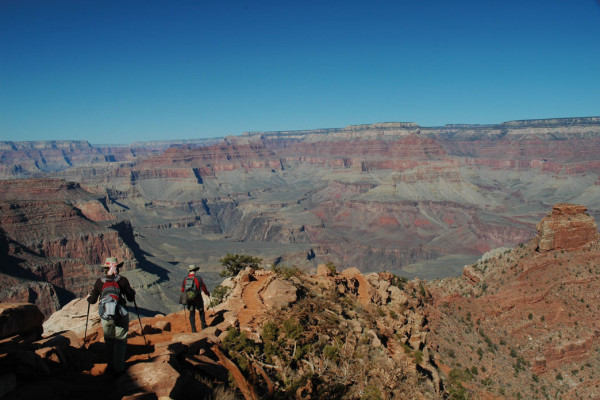Continued (page 5 of 5)
Sedona RoadRunner
In October 2006, the first Sedona RoadRunner, a trolley painted with a bright blue sky and red rocks, made its way from Uptown to Tlaquepaque Arts & Crafts Village and on to Hillside Sedona, allowing shoppers to browse with ease by leaving their car in one location. It’s commendable that a town as small as Sedona would have public transportation, but it’s even more noteworthy that the RoadRunner operates on B-20 biodiesel, a blend of soy oil and ultra-low-sulfur diesel. The fuel costs about $0.80 per gallon more than standard gasoline and is not without controversy, but Jim Wagner, senior manager of operations for the Northern Arizona Intergovernmental Public Transportation Authority (NAIPTA), says, for now, it’s the only way to go.
“It’s the direction a lot of transit systems choose to go,” says Jim. “We also operate the Mountain Line in Flagstaff, and it runs off biodiesel. People are surprised and want to know where we get our fuel. It comes from United Fuel and Energy [also known as Reamax Oil Co.] in Camp Verde. We have a 1,000-gallon tank in West Sedona and they come fill it twice a month. The tank operates off solar panels and a solar battery.”
NAIPTA and the City of Sedona now own four, 25-seat, trolleys, all with wheelchair and bicycle storage. Two are on the road at any given time. (Five real-time, electronic arrival signs along the route inform riders of the wait time between trolleys.) While the RoadRunner began as a way to shuttle shoppers between the major shopping and gallery districts along a 1.3-mile stretch of highway, thus freeing up precious parking spaces and reducing the number of cars on the road, a commuter service was later added. The RoadRunner Cottonwood Express, which caters to hotel workers, travels between Cottonwood and Sedona twice each morning and twice each evening with multiple stops along the way. Riding the circulator route is free, while the commuter trolley costs $2 one way or $40 for a monthly pass.
The commuter trolley has become so popular that NAIPTA and the City have been discussing increasing the number of commuter trips from four to eight. Jim says the decrease in gas prices at the end of 2008 had no effect on ridership – it seems those who started riding the trolley to save money also prefer the ease of leaving their car behind. Jim doesn’t expect the completion of sidewalks running from Uptown and out SR 179 to affect ridership, either. “It’s still a bit of a walk from Uptown to Hillside, especially when it’s hot or raining,” he says. “You can sit in the RoadRunner and take in the beautiful views from the big windows. People love the service.”
Sedona Roadrunner Circulator Route runs every 10 minutes, seven days a week, from 9 a.m. to 6:30 p.m.; free; wheelchair accessible; bike rack available.
Commuter Route runs along SR 89A between Cottonwood and Sedona at 7:45 a.m. and 8:45 a.m., seven days a week, with return trips at 5:30 p.m. and 6:30 p.m.; cost is $2 one way or $40 per month; wheelchair accessible; bike rack available. For a route map or more information, visit www.roadrunner.az.gov or call 928-282-0938.



